
Callirrhoe (; Greek: Καλλιρρόη), also known as Jupiter XVII, is one of Jupiter's outer natural satellites. It is an irregular moon that orbits in a retrograde direction. Callirrhoe was imaged by Spacewatch at Kitt Peak National Observatory from October 6 through November 4, 1999, and originally designated as asteroid 1999 UX18. It was discovered to be in orbit around Jupiter by Tim Spahr on July 18, 2000, and then given the designation S/1999 J 1. It was the 17th confirmed moon of Jupiter.

Kale, also known as Jupiter XXXVII, is a retrograde irregular satellite of Jupiter. It was discovered in 2001 by astronomers Scott S. Sheppard, D. Jewitt, and J. Kleyna, and was originally designated as S/2001 J 8.

Euanthe, also known as Jupiter XXXIII, is a retrograde irregular satellite of Jupiter. It was discovered by a team of astronomers from the University of Hawaii led by Scott S. Sheppard in 2001, and given the temporary designation S/2001 J 7.

Thyone, also known as Jupiter XXIX, is a retrograde irregular satellite of Jupiter. It was discovered by a team of astronomers from the University of Hawaii led by Scott S. Sheppard in 2001, and given the temporary designation S/2001 J 2.

Harpalyke, also known as Jupiter XXII, is a retrograde irregular satellite of Jupiter. It was discovered by a team of astronomers from the University of Hawaii led by Scott S. Sheppard in 2000, and given the temporary designation S/2000 J 5. In August 2003, the moon was named after Harpalyce, the incestuous daughter of Clymenus, who in some accounts was also a lover of Zeus (Jupiter).
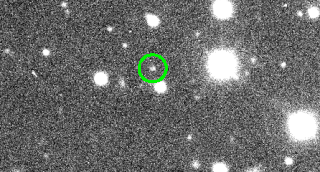
Hermippe, also known as Jupiter XXX, is a natural satellite of Jupiter. It was discovered concurrently with Eurydome by a team of astronomers from the Institute for Astronomy of the University of Hawaii led by David Jewitt and Scott S. Sheppard and Jan Kleyna in 2001, and given the temporary designation S/2001 J 3.

Praxidike, also known as Jupiter XXVII, is a retrograde irregular satellite of Jupiter. It was discovered by a team of astronomers from the University of Hawaii led by Scott S. Sheppard in 2000, and given the temporary designation S/2000 J 7.
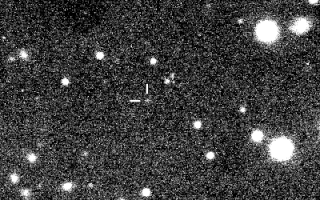
Pasithee, also known as Jupiter XXXVIII, is a retrograde irregular satellite of Jupiter. It was discovered by a team of astronomers from the University of Hawaii led by Scott S. Sheppard in 2001, and given the temporary designation S/2001 J 6.

Chaldene, also known as Jupiter XXI, is a retrograde irregular satellite of Jupiter. It was discovered by a team of astronomers from the University of Hawaii led by Scott S. Sheppard, in 2000, and given the temporary designation S/2000 J 10.

Isonoe, also known as Jupiter XXVI, is a retrograde irregular satellite of Jupiter. It was discovered by a team of astronomers from the University of Hawaii led by Scott S. Sheppard in 2000, and given the temporary designation S/2000 J 6.
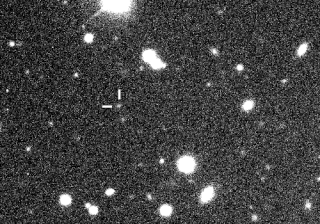
Aitne, also known as Jupiter XXXI, is a retrograde irregular satellite of Jupiter. It was discovered by a team of astronomers from the University of Hawaii led by Scott S. Sheppard in 2001, and given the temporary designation S/2001 J 11. Aitne belongs to the Carme group, made up of irregular retrograde moons orbiting Jupiter at a distance ranging between 23 and 24 Gm and at an inclination of about 165°.
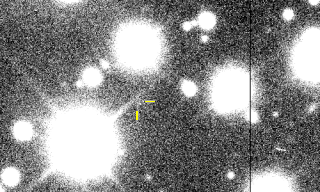
Erinome, also known as Jupiter XXV, is a retrograde irregular satellite of Jupiter. It was discovered by a team of astronomers from the University of Hawaii led by Scott S. Sheppard in 2000, and given the temporary designation S/2000 J 4.
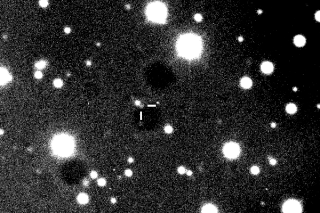
Taygete, also known as Jupiter XX, is a retrograde irregular satellite of Jupiter. It was discovered by a team of astronomers from the University of Hawaii led by Scott S. Sheppard, in 2000, and given the temporary designation S/2000 J 9.
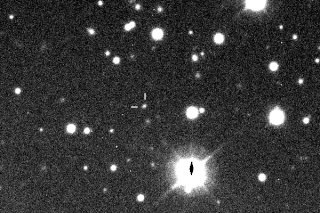
Kalyke, also known as Jupiter XXIII, is a retrograde irregular satellite of Jupiter. It was discovered by a team of astronomers from the University of Hawaii led by Scott S. Sheppard in 2000, and given the temporary designation S/2000 J 2.

Eurydome, also known as Jupiter XXXII, is a natural satellite of Jupiter. It was discovered concurrently with Hermippe by a team of astronomers from the University of Hawaii led by Scott S. Sheppard in 2001, and given the temporary designation S/2001 J 4.

Autonoe, also known as Jupiter XXVIII, is a natural satellite of Jupiter.

Megaclite, also known as Jupiter XIX, is a natural satellite of Jupiter. It was discovered by a team of astronomers from the University of Hawaii led by Scott S. Sheppard in 2000, and given the temporary designation S/2000 J 8.
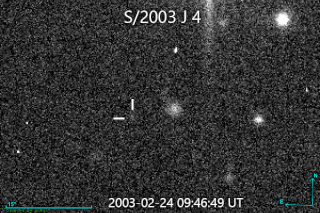
S/2003 J 4 is a natural satellite of Jupiter. It was discovered by a team of astronomers from the University of Hawaii led by Scott S. Sheppard in 2003.
Eirene, also Jupiter LVII and originally known as S/2003 J 5, is a retrograde irregular satellite of Jupiter. It was discovered by a team of astronomers from the University of Hawaii led by Scott S. Sheppard in 2003 but was then lost. It was recovered in 2017 and given its permanent designation that year.
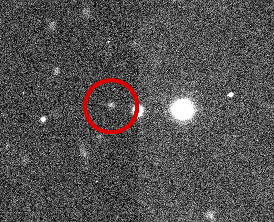
S/2003 J 23 is a natural satellite of Jupiter. It was discovered by a team of astronomers from the University of Hawaii led by Scott S. Sheppard et al. in 2004 from pictures taken in 2003.



















